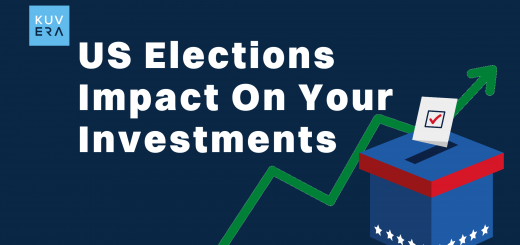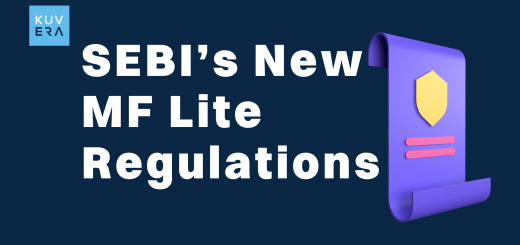A fund house or asset management firm can introduce a new mutual fund scheme through a new fund offer, or NFO. A corporation becomes listed through an IPO, an NFO is somewhat similar kind of exercise for a mutual fund.
NFO permits the fund house to gather funds from investors and invest in securities such as shares, bonds, etc., much like the IPO it aids the company in raising capital. The mutual fund house also provides investors with pertinent information when starting an NFO, such as the kinds of securities that should be purchased, the fund management, the purpose of the investment, etc.
Key Points:
- NFO stands for “New Fund Offer.
- NFO assists asset management firms in raising money for mutual funds.
- NFO can be used to launch both open-ended and closed-ended funds.
- In an NFO, units are given for low prices, typically at Rs 10.
- Both open-ended and closed-ended mutual funds are introduced through NFOs.
- NFOs can be open for subscription for a maximum of 15 days in accordance with SEBI’s requirements (except ELSS mutual funds).
How Does An NFO Work?
The maximum time period allowed by SEBI for an NFO subscription offered by an asset management firm is 15 days (except for ELSS Mutual Fund). Typically, an NFO’s subscription offer price is fixed at Rs 10. Due to this, investors can purchase fund units for a very low cost.
The mutual fund units will begin trading at a price determined by the fund’s Net Asset Value when the NFO closes (NAV). As a result, the price of the units purchased by the investors during the NFO may increase if the securities in which the corpus is invested performs well.
What Are Various NFO Types?
NFOs can be broadly divided into close-ended funds and open-ended funds depending on the type of mutual fund that is being introduced.
Lets first understand the difference between open and closed ended funds before we understand the difference between their NFOs.
What Are Open-Ended Mutual Funds?
These programmes continuously issue and redeem mutual fund units, allowing investors to participate and exit the mutual fund scheme as the investors sees fit. Even after the NFO (New Fund Offer) period has passed, the units may still be bought and redeemed.
The NAV, or net asset value, is the price at which units are sold and brought. Every time the asset management company grants or redeems the present units, the number of total units changes, either going up or down. The total capital of an open-ended scheme varies from day to day for this reason.
When the AMC issues more units than it redeems, the fund gets bigger. However, if AMCs allows redemption of more units than they issue, the size of the mutual fund scheme decreases.
What Are Close-Ended Mutual Funds?
A set number of units from a closed-end fund are issued and traded. Most of the close-ended mutual funds are listed on the stock exchange, this allows investors an exit option as they can sell their units to other interested parties. NFO helps the close-ended mutual funds in raising funds.
Closed-end mutual funds may trade at a premium or a discount to their NAVs in the stock exchange since the price of the units on the stock exchange not only depends on the NAV but also on supply and demand. These units have a set maturity date.
In case a close ended fund is not listed on the stock exchange the mutual fund house has to provide periodic redemption windows during which the investors can redeem their units. These funds buy back the units during the redemption window in order to provide an alternate source of liquidity.
According to SEBI requirements, closed-ended funds must provide investors with one of the two exit options: (a) listing the units on the stock exchange or (b) providing periodic redemption window.
What Are The Key Differences Between Open Ended Mutual Funds And Close Ended Mutual Funds?
-
Liquidity
Open-ended funds are extremely liquid; one can redeem them at any moment. Unlike close-ended funds, which have a fixed lock-in term.
-
Capital Management
There is no redemption pressure on the fund manager in close-ended funds. However, the situation is slightly different in close-ended funds. The fund manager is under a lot of pressure since investors are willing to redeem their investments.
-
Purchasing, Selling, and Trading
Most close-ended mutual funds are listed on the stock exchanges, where they can be sold and brought. Open-ended funds, on the other hand, typically are not traded on stock exchanges (only a few open-ended funds are listed, majority are not).
-
Value of Net Assets (NAV)
One purchase for open-ended funds based on the fund’s current NAV. However, closed-ended funds price on the stock exchange may be different from their NAV. Their price is determined through supply and demand. .
-
Investment Window
Every day, the public can buy new units of an open-ended mutual fund, which means they can give their units in exchange for money. On the other hand, closed-ended fund subscriptions are only available for a brief time.
-
Maturity Time
There is no predetermined maturity duration for open-ended funds, whereas closed-ended funds do have a predetermined maturity period.
-
Corpus
The open-ended fund’s corpus can fluctuate due to frequent purchases and redemptions. Closed-ended funds have a fixed corpus because no fresh units are offered for sale that would surpass the set cap.
-
Listing
The open-ended mutual fund’s shares are typically not listed on the stock exchange; the majority of open-ended mutual funds in India are unlisted. On the other hand, the majority of the closed-ended mutual fund’s units are listed on the stock exchange.
What Are The Merits Of Open-Ended And Close Ended Mutual Funds?
Merits Of Close-Ended Mutual Funds
- Continuous Asset Support
Investors in these mutual funds are not allowed to redeem fund units other than on the dates specified, which are the dates on which the fund’s maturity expires or periodic redemption windows. This provides portfolio managers with a consistent foundation of assets that are not used for frequent redemptions.
The fund manager is in a good position to create an investing strategy because to a constant asset basis. Without worrying about inflows or outflows, he or she maintains an overall awareness of the fund’s objectives.
Market Rates and Accessibility
Close-Ended Funds sell or purchase equity shares typically on stock exchanges. This allows investors the opportunity to trade fund units depending on current prices. Additionally, the NAV of the fund may have a bigger premium or a smaller discount. Investors are able to use margin trading, market/limit orders, and other typical stock trading strategies.
Flexibility and Liquidity
Investors are free to sell their units on the stock exchange even at a premium to the NAV, if the demand of the units is more than the supply.
What Are The Merits Of Close Ended Mutual Funds?
Investments in Open-Ended Mutual Funds Via SIP
An excellent investment choice for a sizable portion of investors in the salaried class is open-ended funds. The reason for this is that they can begin a SIP investment into the fund of their choice.
Liquidity
Because one can redeem fund units as desired, open-ended funds offer good liquidity. Open-ended funds offer the flexibility of redemption at the current NAV in contrast to other long-term investment options.
Track Record Readily Available
Past performance data is available for open-ended funds. So choosing to invest in an open-ended fund is potentially a wise decision for investors who do deep research, although past returns are not a guarantee for future returns.
Close-Ended Funds NFO
The corpus of closed-ended mutual fund schemes is fixed. Even after the NFO’s subscription has ended, the number of units in the fund stays the same. Additionally, if the fund is listed on the stock exchange, the market price of the units is established based on the overall supply and demand.
The market price at which the units are exchanged depends on the supply of units in the market. Additionally, the market price reveals whether or not the units are being exchanged at a premium or discount. The units are said to be traded at a discount if the market price is less than the NAV units’ price, and at a premium if the market price is higher than the NAV units’ price.
NFO For Open-ended Funds
Units in open-ended mutual funds are not set, unlike those in close-ended mutual funds; rather, they fluctuate depending on the underlying demand. NAV reflects the value of your investment.
What Justifies Investing in NFO?
A mutual fund company may introduce a new mutual fund scheme and raise money through an NFO in order to invest in stocks, bonds, and other financial instruments. It takes the form of a launch offer, in which the fund house sells units to the investor.
You should always conduct thorough research before investing in anything. To generate buzz and draw investors, asset management firms spend a lot of money promoting NFOs. Therefore, it is advised to carefully review all pertinent information, such as assets that will be purchased with the funds raised, the launch target, etc., before making any investment decisions.
What To Check Before Investing In An NFO?
Make It Certain That You Are Making A Good Investment.
An NFO investment should not just be made with the intention of profiting from a higher NAV price in the future in the short term. If you are planning to start an investment journey, your aim should be to commit to a longer period of time. Hence, learn the NFO’s objectives, strategy of investment, etc., and check whether there is something new which you cannot get from the existing mutual fund schemes.
Evaluate Risks
Since NFOs launch offerings of new mutual fund schemes, they do not have any performance history. Hence, it is very difficult to analyze the returns that can be expected from the mutual fund.
You cannot predict whether the fund is going to perform well or will fail when it goes live. However, you can check a few details to gauge the future performance of the fund. The two most important details are – the fund manager and the investment plan.
Try to check out the history of the fund manager, i.e. how well the past funds have performed under the management of the fund manager. Know the investment plan that explains where and how the funds are going to be invested, how the sector is performing, and its future prospects.
Choose Wisely Between Open-ended and Close-ended Mutual Funds
Always frame a proper investment goal before investing in any New Fund offer (NFO). Please understand the difference between the two, which we have discussed above.
How to Invest in NFO?
Investing in NFO is as easy as investing in a mutual fund scheme. You need to follow only a few basic steps to start your investment journey with an NFO.
- Check the NFOs that are open for subscription
- Check the minimum subscription price. It usually ranges from Rs 100 to Rs 5,000
- Pay the required amount and wait for the mutual fund to get live
- The units will be allocated and will be available to trade once the fund is live
NFOs offer a great opportunity to invest in a new mutual fund scheme at a minimal price. They allow you to explore new investment opportunities and earn higher returns easily. However, NFOs, unlike existing mutual funds, lack performance history. Hence, you should invest only after doing proper research.
What Are Some Of The Misconceptions Associated With NFOs?
Misconception 1: Equity IPOs and mutual fund NFOs are identical
Although that is a widely held belief, that is false. There are some minute variations. First off, an IPO either takes the shape of a new round of financing for the business or an offer to buy (OFS). An New Fund Offer is used to raise funding for new projects, and because there are no restrictions on how much money it may raise, the supply is unrestricted.
Second, there are distinct quotas for institutional investors, HNIs, and ordinary investors in IPOs. For retail investors, the majority of IPOs also provide a separate price reduction. In the case of mutual fund NFOs, individual investors do not receive any such unique advantages. Thirdly, dynamics of supply and demand determine the IPO price.
Only the price range is predetermined; the exact price is determined by the level of interest in the created book. The NFO has nothing to do with demand because there is an endless supply. The NFO price is always fixed at Rs. 10.
Myth 2: Because most NFOs have a NAV of Rs. 10, it is preferable to an already existing mutual fund
This is another common myth. The NAV of a mutual fund is only theoretically significant. When purchasing a mutual fund, especially an equity mutual fund, it is important to understand that investor will gain basis the future performance of the mutual fund. The price at which the NAV is offered during an NFO is irrelevant.
Myth 3: Purchasing an NFO is less expensive than doing so with an existing mutual fund
In reality, the opposite is true. A mutual fund must invest significantly in marketing, publicity, and distribution when it releases an NFO. Higher costs are associated with it in the form of advertising, brochure publication, form and marketing collateral printing, road shows, broker meetings around the nation, etc.
In addition, for seriously distributing these mutual fund NFOs, the majority of brokers and distributors charge upfront commission and trail fees. The upfront expense of an NFO is considerable when all of these factors are considered. Remember that all of these expenses will eventually be deducted from your NAV, thus your NFO will always list at a discount to the NAV’s par value.
Myth 4: Long-term investors can gain value through NFOs.
Because the majority of mutual fund NFOs tend to cluster around the time when markets are at their height, this is still another significant fallacy. Throughout the years 2006 and 2007, there were numerous mutual fund NFOs, and it often took a while for them to return to par value.
Similar to this, practically every fund formed an IT/ICE fund at the height of the tech bubble in 2000, and by 2002, the value of the majority of these NFOs had decreased significantly. Mutual fund NFOs typically strive to profit on the hype surrounding an equity rally as well as the hottest sector in a rally. In either case, you are probably starting out at a disadvantage.
The paradox of mutual fund NFOs is that they hardly ever occur in a wave when the market is trading at a discount. Only when valuations are high—when it is easier to sell the concept of an NFO—will there normally be a wave of NFOs. The majority of NFOs are sectoral or thematic and take place at market peaks. The Rs. 10 NAV is really a fantasy created to catch your attention. Try not to overreact. It is far better to conduct a consistent SIP on equities funds with a proven track record.
Conclusion
Both the prevalence and number of NFOs have grown over time. It is crucial that you extensively research an NFO before investing as an investor. Since there are so many different funds already on the market, it can be quite helpful to discover and choose an NFO that provides something special.
Did you know? You can now invest in direct schemes of mutual funds on Kuvera:
Step 1: Download the Kuvera app or visit our website.
Step 2: Create your account on Kuvera by completing the mandatory KYC procedure. This will hardly take a few minutes. Once that’s completed, select the ‘Invest’ option on our homepage after which you can select ‘Mutual Funds’ and ‘Arbitrage’.
Step 3: Kindly go through the list of all zero-commission direct plans of mutual fund schemes to start investing.
Interested in how we think about the markets?
Read more: Zen And The Art Of Investing
Watch/hear on YouTube:
Start investing through a platform that brings goal planning and investing to your fingertips. Visit Kuvera.in to discover Direct Plans and Fixed Deposits and start investing today.
#MutualFundSahiHai #KuveraSabseSahiHai!











